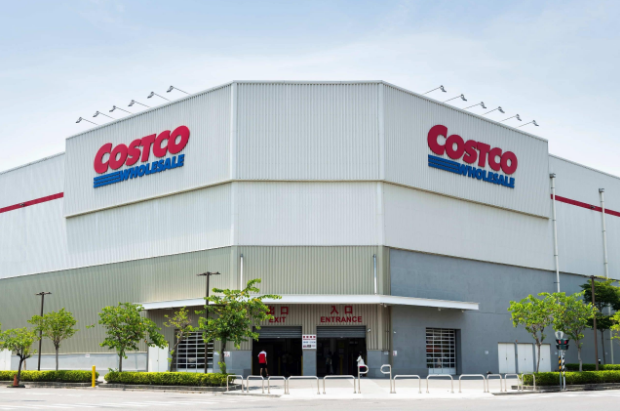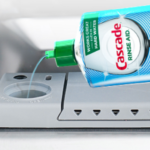Introduction to the Costco Wipes Lawsuit
The recent Costco wipes lawsuit baby wipes has sent shockwaves through the parenting community, raising eyebrows and concern among those who rely on baby wipes for their little ones. Parents trust that these products are safe, gentle, and effective. However, allegations have surfaced suggesting otherwise. As families navigate this unsettling news, it’s essential to uncover the truth behind the claims against Costco and understand what’s really in those beloved baby wipes. Let’s dive into this hot topic that’s making headlines and explore what parents need to know about the ingredients lurking in their favorite diaper bag essentials.
What Are the Allegations Against Costco?
The allegations against Costco wipes lawsuit baby wipes concerning their baby wipes have raised significant concerns. Plaintiffs claim that the products contain potentially harmful substances. These ingredients may pose risks to infants and young children, who are particularly vulnerable.
Some lawsuits argue that the packaging misleads consumers about safety levels. Parents expect baby wipes to be gentle and safe, especially for delicate skin. The accusations suggest that Costco did not adequately disclose all of the components used in these wipes.
Additionally, critics point out an apparent lack of rigorous testing before releasing these products into the market. This raises questions about corporate responsibility and consumer trust. Families rely on brands like Costco for quality assurance when it comes to caring for their little ones.
As this situation unfolds, many are eager to see how Costco responds to these serious claims.
The History of Baby Wipes and Their Ingredients
Baby wipes have a surprisingly rich history. They first emerged in the late 1950s, aimed at providing parents with a convenient way to clean their infants during diaper changes.
Initially, these wipes were simple cloths soaked in water or soap. However, as demand grew, manufacturers began adding various ingredients for improved effectiveness and convenience.
By the 1990s, baby wipes had evolved significantly. Formulations now included preservatives and fragrances to enhance cleanliness and usability. This evolution made them popular not just for babies but also for adults seeking quick cleaning solutions.
Despite their popularity, concerns about certain chemicals started surfacing as consumers became more ingredient-conscious. Parents want reassurance that what they use on their children is safe and gentle—prompting many companies to reformulate products accordingly. The journey of baby wipes reflects both innovation and an increasing awareness of health implications associated with personal care items.
Potential Harmful Ingredients Found in Baby Wipes
Baby wipes are often marketed as safe and gentle, but some may contain ingredients that raise eyebrows. Commonly found components include fragrances and preservatives, which can trigger allergic reactions in sensitive individuals.
Another ingredient of concern is phenoxyethanol. While it helps prevent bacterial growth, studies suggest it may cause skin irritation or even affect the nervous system when absorbed in large amounts.
Parabens are frequently used as preservatives too. Though they extend shelf life, their potential link to hormone disruption has led many parents to seek alternatives.
Even though many manufacturers claim their products are hypoallergenic, this label doesn’t guarantee safety for everyone. It’s essential to read labels carefully and understand what you’re putting on your baby’s skin.
The Role of Government Agencies in Regulating Baby Wipes
Government agencies play a crucial role in overseeing the safety of consumer products, including baby wipes. In the United States, the Food and Drug Administration (FDA) is responsible for regulating cosmetics and personal care items, which encompasses many types of wipes.
While baby wipes are generally classified as cosmetic products, they still must adhere to specific guidelines regarding labeling and ingredient safety. However, this regulation can sometimes be vague.
The Environmental Protection Agency (EPA) also gets involved when it comes to certain chemicals used in these products. They evaluate potential risks associated with substances that might pose harm to infants or sensitive skin.
Despite these efforts, many consumers remain unaware of what ingredients are truly safe. This gap highlights the need for clearer regulations and more transparency from manufacturers about their formulations. Trust becomes essential when choosing products meant for delicate skin.
Other Similar Lawsuits Against Baby Wipes Companies
The landscape of baby wipes is not without its controversies. Over the years, several companies have faced lawsuits related to their products. Consumers have raised concerns about potential health risks associated with various ingredients.
One notable case involved a widely recognized brand accused of including harmful chemicals in their wipes. Plaintiffs claimed these substances posed serious threats to infants’ delicate skin and overall health. The outcome hinged on whether the company had adequately disclosed ingredient information.
Another instance saw a different manufacturer facing backlash for misleading advertising practices. Parents felt duped by claims of “natural” or “safe” when independent studies suggested otherwise.
These legal battles underscore the importance of vigilance among consumers. As awareness grows, more families are scrutinizing product labels before making purchasing decisions, seeking peace of mind amidst rising concerns over safety standards in everyday items like baby wipes.
Protecting Yourself and Your Family from Harmful Ingredients in Baby Wipes
When it comes to choosing baby wipes, awareness is your best defense. Start by reading the labels carefully. Look for products that are free from harsh chemicals and artificial fragrances.
Consider opting for brands that prioritize natural ingredients. Many companies now offer organic or hypoallergenic options, designed with sensitive skin in mind.
Don’t shy away from reaching out to manufacturers. Ask them about their sourcing practices and safety testing procedures. Transparency can give you peace of mind.
You might also want to explore DIY alternatives. Homemade baby wipes can be simple and safe, using soft cloths soaked in a gentle solution of water and mild soap or natural oils.
Educate those around you as well. Share information with friends and family about harmful substances found in some commercial products so they can make informed choices too.
Staying proactive ensures your family’s health remains a top priority while navigating the myriad options available on store shelves today.
Conclusion:
The Costco wipes lawsuit baby wipes centered around baby wipes has highlighted significant concerns among consumers. As parents, we strive to provide safe products for our little ones. The allegations against Costco have prompted many to scrutinize the ingredients in baby wipes more closely.
Understanding the history of these products helps put things into perspective. Baby wipes have evolved significantly over time, but so too have consumer expectations regarding safety and efficacy. With growing awareness about potentially harmful substances, it’s crucial to stay informed about what goes on your baby’s skin.
Government agencies play a pivotal role in regulating such products, yet questions remain about their effectiveness and oversight processes. This situation isn’t unique to Costco; several other companies face similar lawsuits that call attention to ingredient transparency and safety.
As concerned caregivers, protecting ourselves and our families is paramount. Educating yourself on product labels can go a long way in ensuring you make the best choices for your child’s health.
Vigilance is key when it comes to keeping our children safe from potential harm lurking in everyday items like baby wipes. Awareness leads us toward safer options and empowers us as consumers demanding better quality control from manufacturers across the board.


